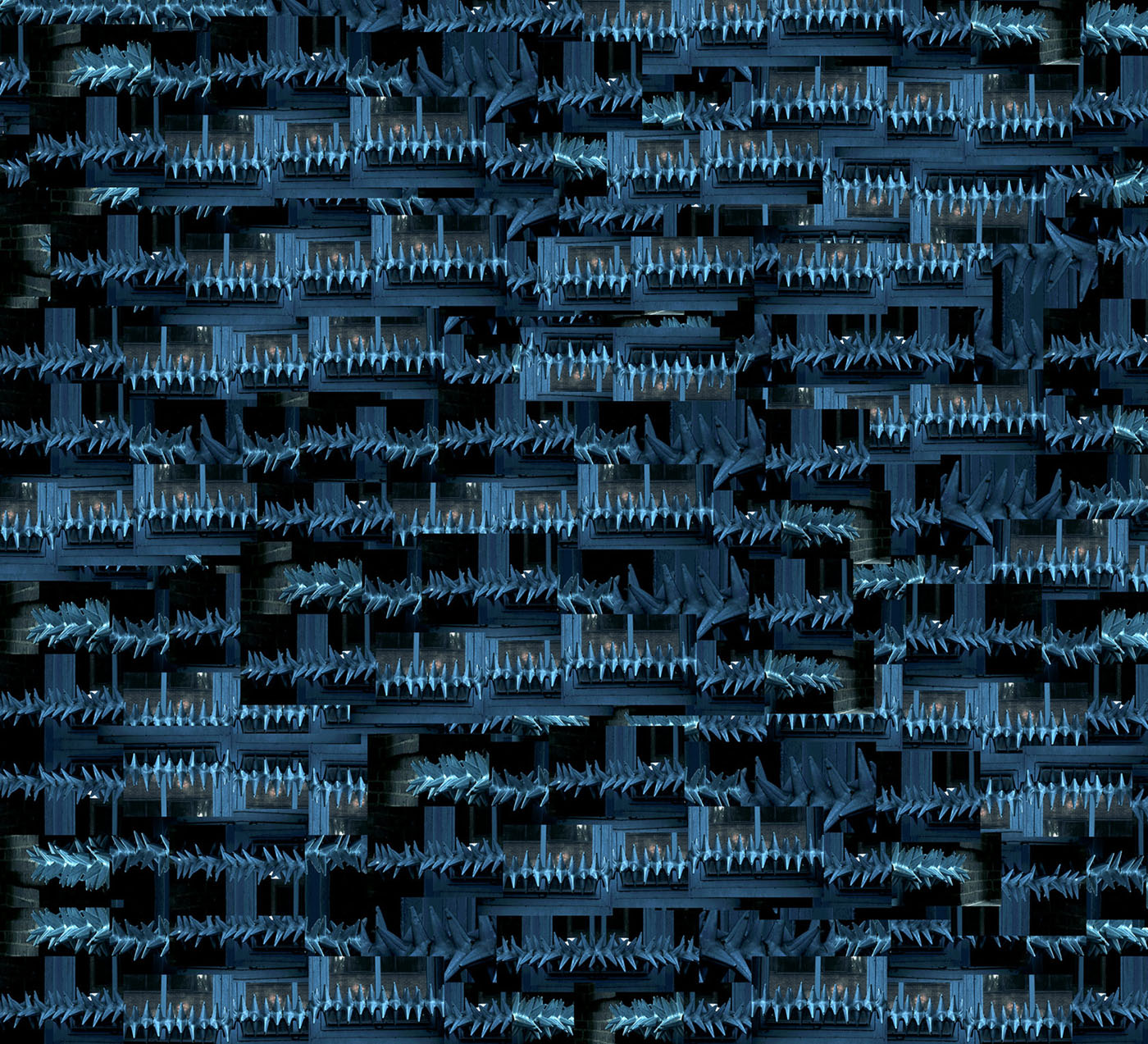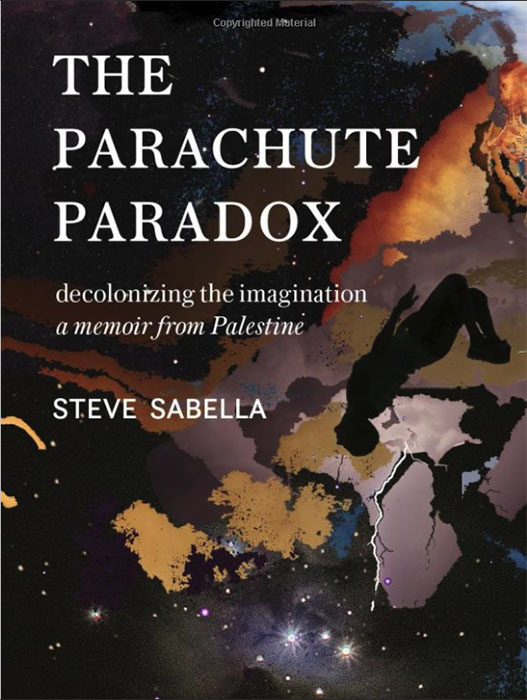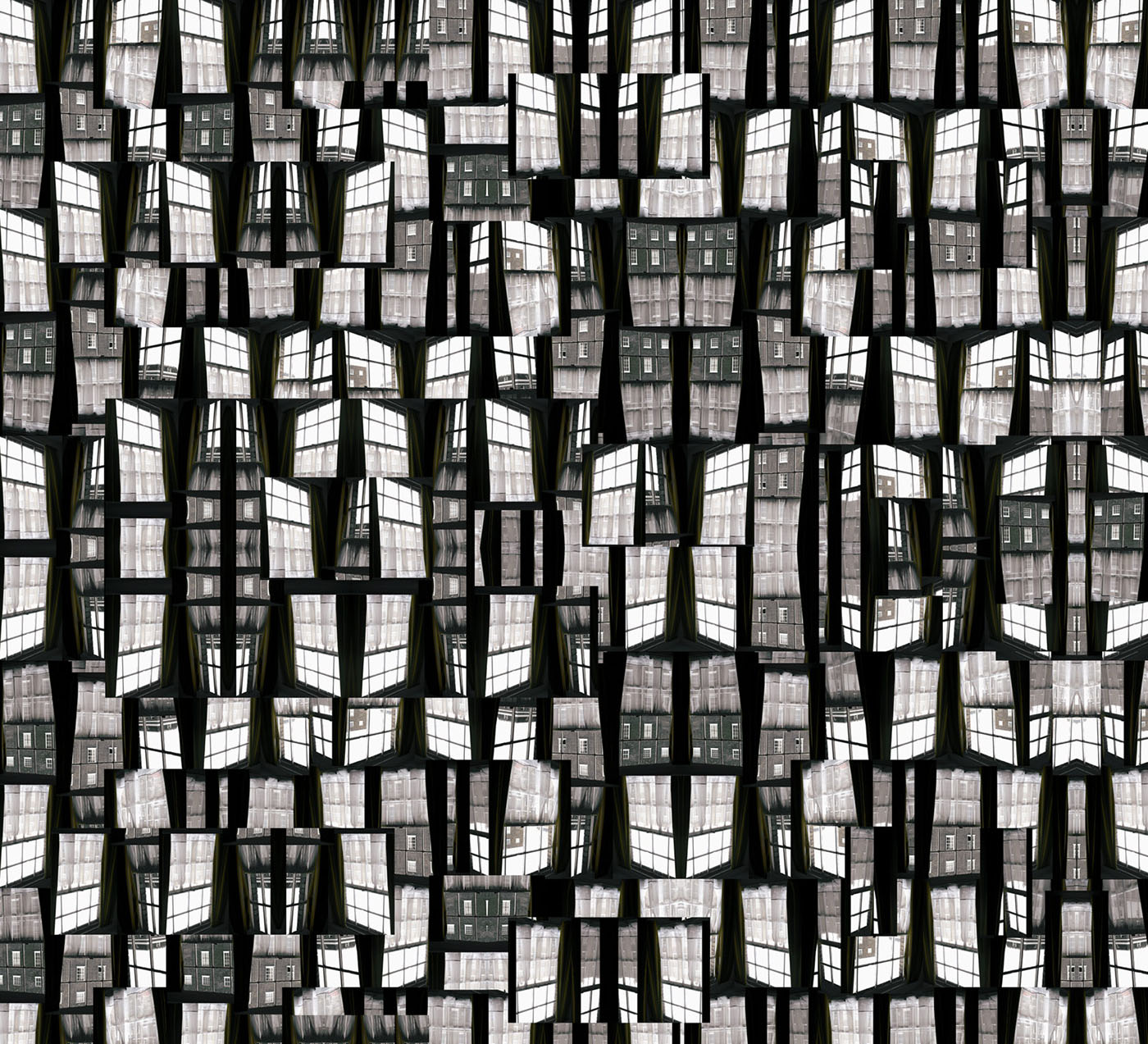
For Steve Sabella, the occupation attaches each Palestinian to an Israeli, as if in a tandem jump. The Israeli is always in control, placing the Palestinian under threat in a never-ending hostage situation. Sabella has two options: either to surrender or take a leap of faith. Sabella’s memoir, The Parachute Paradox, tells the life story of the artist born in Jerusalem’s Old City and raised under Israeli Occupation. After living through both intifadas, being kidnapped in Gaza, and learning to navigate different cultures, he feels in exile at home. Blurring fact and fiction, love and loss, the memoir traces one man’s arduous search for liberation from within, through a confrontation with the colonized imagination. The stories here from The Parachute Paradox have been selected by the editor.
Steve Sabella
When I got home, I raced against time to pack and get to Ben Gurion Airport in Tel Aviv. I was exhausted, and dreaded the usual three hours of questioning and interrogation by Israeli airport security.
Shalom, meh eyfo ata?
Hello, where are you from?

In a Hebrew accent, while gargling the R in Yerushalayim, I said:
Ani meh Yerushalayim.
I come from Jerusalem.
She continued,
Where exactly do you come from?
If I answered with “East Jerusalem,” it would be assumed I was an Arab. And if I answered with “West Jerusalem,” they would suspect I was Jewish. I replied,
Antonia Street, the Old City.
She checked my passport, but my place of origin was still not clear to her. She asked me for my father’s name,
Emile.
Your mother’s?
Espérance.
Your grandfather’s?
Antone.
What is the origin of the name Sabella?
Sicilian.
Do you celebrate Hanukkah?
Why not.
Do you celebrate Christmas?
Sure.
She was hesitant to ask if I was an Arab or Palestinian Arab. To speed things up, I told her I came from Jerusalem. The Arab one. All I wanted was to board the plane and close my eyes.
What is your occupation?
Artist.
I also work as a photographer for the UN.
I showed her my press card.
Where were you before you arrived at the airport?
I couldn’t tell her I had just been kidnapped in Gaza. She would consider it a security threat and definitely not allow me to board the plane.
In Jerusalem.
And why are you going to Switzerland?
To have a holiday with my wife and daughter.
My wife is Swiss.
Why are you traveling alone?
Why do you work for the UN?
Have you traveled to Gaza with the UN?
Why do you live in Jerusalem?
Why don’t you live in Switzerland?
When did your family settle in Jerusalem?
Why is your name Steve?
The questions were endless, and the first security guard was replaced by a second, and the second by a third, until the chief of security was called. I kept repeating the same narrative. Again and again. I had to be consistent and not make any mistakes.
Listen to me. This is my story. No matter how long you interrogate me, it will not change. Either you let me go home to Jerusalem, or you let me board the flight to Switzerland. Let’s get this over with.
They gave in, allowed me to board after a conspicuous bag check and a full body search, escorted me to the plane like a VIP, and finally left me. I found my seat, sat down, and leaned back to close my eyes for the first time in two days. But every time I heard the click of a seatbelt, I woke up startled — it sounded like the cocking of the kidnappers’ guns.
I opened my restless eyes and spotted a man watching me. He was Black, and I imagined for a moment that he was the man the kidnappers released that morning. When he noticed that I spotted him, he unbuckled his seatbelt, walked over, and sat down on the aisle seat next to me. He spread open a newspaper and pointed to a photograph,
Is this you?
It showed a woman and me with guns and masks all around us. The bold title read, “UN Workers Freed in Gaza.” I fell into my seat and said:
Sometimes, the answer is right there in front of you!
Up in the air, I traveled to the time I went skydiving in Haifa. On the tarmac, the plane looked like it hadn’t flown since the 1967 War. After takeoff, the engine roared as if it could fail any second, wildly shaking as it reached the sky. When the time had come, I unbuckled my seatbelt and leaned out of the open door against the rushing wind. With little thought, I did it. I let go. I was flying in the air. I felt light, less burdened by what was happening below. I felt identity-less, free from all the labels and classifications, free from racism and discrimination. Free from the Israeli Occupation I was born into.
But I didn’t open the parachute. I was in a tandem jump, attached to an Israeli. Over the years, I have come to see this situation in the air as a metaphor for what it means to be a Palestinian born under Israeli Occupation. Life under Occupation is like the reality of a Palestinian attached to an Israeli in a tandem jump. There is an Israeli on the back of every Palestinian, controlling all aspects of life — the Israeli is always in control. This impossible reality places the Palestinian under constant threat, in a never-ending hostage situation.
On the ground, I struggled with paralyzing depression that sank to new lows year after year. But I knew my journey would have to be one of self-interrogation and liberation. With the speed of the fall, I felt Francesca’s presence. Over the years, we had built our own world, rooted only in our imagination.

Let me take you back to 1996, when I sat alone in the back corner of Abu Shanab, a bustling hangout in the Old City of Jerusalem. I was only twenty. The First Intifada had ended three years earlier, but I was still tormented by severe episodes of depression, like aftershocks following an earthquake. Suddenly, my eyes caught sight of a face shining ethereally under a table lamp. Her bright face, blue eyes, and delicate lips, as though painted by a master, were shadowed by her long black hair. She was a sign from the universe. And I knew that my mission was to be with her.
Francesca was born in Switzerland. Three days before she came to Jerusalem to live with me, I flew to Bern to surprise her on her last day of work. I set up my tripod at her bus stop with a red rose. She walked down the dark street, saw it, and sat down on the empty bench on the other side of the bus shelter from where I was hiding. After a few tense minutes, the bus arrived, and just as she stepped in, I grabbed her hand from behind, pulling her close to me, and whispered,
Tonight you’re not going home alone!
Francesca didn’t stop laughing. On the bus, I gave her a black-and-white photograph I had created a few years earlier. Two hands and arms extend parallel to each other towards the sky, mirroring a plant stretching towards the light.
My first trip outside Jerusalem was planned when I was twelve. I was going to live with an American host family from Connecticut for six months, or even longer. A break meant to be an escape. My parents felt that the distance would lighten the dark depression I had fallen into since the beginning of the First Intifada in 1987 that locked us in our homes. It took me twenty years to find a close description of what I felt back then. It hit me while watching the film, The Diving Bell and the Butterfly, whose protagonist suffered from locked-in syndrome. I, too, had been entrapped, isolated, in endless dialogue with the voices of the self.
I was able to move my body, but it never moved forward.
I was able to move my eyes, but they only saw death.
I was able to hear, but all I wanted was not to hear the sound of bullets and tear gas every day.
I felt the weather change, but my skin grew pallid from sitting in my own darkness.
My home became my prison.
As a twelve-year-old, I was aware that I belonged to a country that was not a country but a land occupied by Israel called Palestine. For the first time, I could see the enormous effort required to break free from the military occupation on the ground, and later from the Israeli colonization of my imagination.
I was impatient. I wanted the conflict to end quickly. It paralyzed me. Suffocated me. I had made plans for my future before the First Intifada, but the Occupation crippled life. The dream of promised peace that never came exhausted me. I understood then, as clearly as I do today, the impossible reality on the ground and its injustices justified by toxic amounts of ideology. At times, the exertion I needed to liberate myself took over me. Once, it found me on the highest ledge of our house in the Old City. While my eyes were drowning in the night sky, contemplating jumping from the roof, I heard my mother shouting hysterically from down below. I did not kill myself. Was it because I loved my mother, or was it because of a belief that someone in the sky was watching over me? Perhaps a bit of both.
When the First Intifada erupted, and the uprisings hit Jerusalem, Palestinians often threw resistance pamphlets over the Old City’s historic wall, flying into my school’s courtyard. They contained patriotic phrases and a list of rules imposed on everyone living in occupied Palestine. They also ordered all schools in Arab Jerusalem to close at midday. To compensate for the lost hours, schools started at 6:30 a.m., which was the worst in winter, when the house was freezing and the sky still dark. My classmates from Ramallah, fifteen kilometers from Jerusalem, had to wake up as early as five o’clock. Victor, my best friend, often fell asleep during class. When we were little, we held hands during some of the breaks. One summer, he opened the cover of the water tank on the roof of his building. He took off his shoes and shirt and jumped through the narrow opening into the water. All I could see was his short spiky hair. After a few seconds, he emerged with a cheeky smile. A few years ago, I heard that Victor ended up in a mental institution.
One day, a sixteen-year-old boy I knew from my school was killed by the Israeli army, the first person to die in Jerusalem during the Intifada. His name was Nidal il Rabady, an Arabic name that means “struggle.” Nidal came from a Christian family that lived between the Christian and Muslim quarters. He was shot while riding his bicycle back home. Like many of my classmates, I attended the funeral at his house. This was my first encounter with death. I was thirteen. The room was packed, and Nidal’s coffin stood in the center. There were two candles placed above his head. He lay in a black coffin, which seemed suspended in air, surrounded by wailing women wrapped in black. I couldn’t see his face. I took a step closer to his mother. My body still holds her grief and recalls her face swollen from countless tears. She kept touching his face. But Nidal was pale, frozen, wearing a suit that did not fit him. A morbid scene that unsettled my bond with life. I stared at Nidal and said a few words, and I left.
People die in wars, and in all wars, at one point, the enemies sit down and make peace possible. There is something distinct about the way Israelis perceive peace. I understand this because I have lived with Israelis like an Israeli. Israelis prefer revenge, to see their enemy defeated first, dead, rather than find novel ways to live in peace.
When a Palestinian was killed, people in Jerusalem and other Palestinian cities would mourn and strike for three whole days, closing all shops, schools, and institutions. Once, my school’s doors were shut for three consecutive months to satisfy the agreed-upon three days of mourning per death.
Our house was in the heart of the Old City, where thirty five thousand Muslims, Christians, Jews, and many other nationalities live and, paradoxically, over the centuries, have learned how not to live together. If you have ever visited Jerusalem’s Old City, you know what I mean. The almost one-square-kilometer place is walled from side to side, chaotic, bustling, in never-ending turmoil with itself. Some people even claim that Jerusalem was built at the center of the universe. They say only those born inside of its gates know when and where to find its mystical moments. I found these moments when the city was empty, deep into the night on the way to Jouret el Enab. From the valley below, the Old City wall looked like a fortress draped in shadows. Glowing city lights drew my eyes along the wall’s path from the valley to the top of Jerusalem. At moments like these, I thought — this is the most magnificent city in the world. Ancient, but not ceasing to renew the spirit. Majestic, but never controlling. A city at unity with itself. At such moments we assume to know the truth. But all these moments, and the truths they reveal, might only exist in the mind.
But I could blend in — in all of the divided Jerusalem and pass freely through Israeli checkpoints, partly because of my fluent Hebrew. I liked speaking Hebrew, and I perfected the R in Beseder by repeating it while gargling water. Over time, the R echoed with the right ring.
Shalom. Hakol beseder?
Shalom. Is everything all right?
As I grew older, I realized I was living in Palestinian culture as an observer and experiencing Israeli culture as an outsider. I had to go through an identity check and started my exploration through my mental wilderness. One of my stations was the Musrara School of Photography, where I lived invisibly among Israelis for three years. My invisibility put me into situations where I saw Israelis take off their masks and have conversations they otherwise would only have behind closed doors. When they asked for my name, I said Steve Sabella. That was enough for them to assume I came from somewhere else, anywhere in the world, but definitely not from Jerusalem or Palestine. In their minds, I fit the category of a Jew who came from Italy or France, not their stereotypes of Arabs. Through the years, I would dare people who confronted me with labels to describe what a Palestinian looked like.



